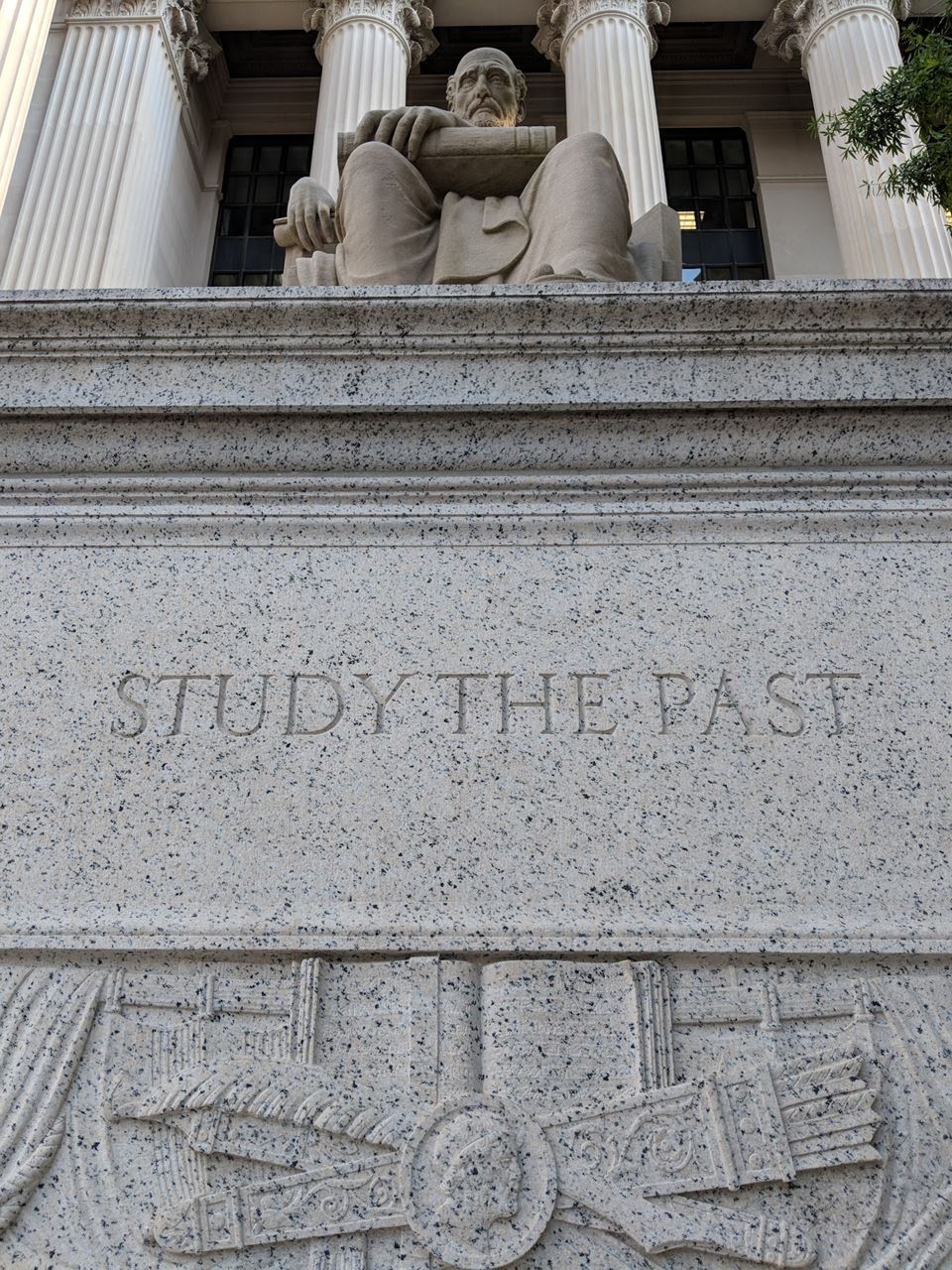 By Michael Fuhlhage
By Michael Fuhlhage
None of us can wait for the pandemic to be over so the archives will open to researchers again. For the time being, this is a good time to plan visits, and I’d like to share what I learned about navigating the major ones in and around Washington, D.C.
I was blessed in 2018 with the opportunity to work with materials from the Library of Congress, National Archives and Records Administration in Washington, D.C., and National Archives II in College Park, Maryland with help from AJHA’s Joseph McKerns Research Grant as I wrapped up my first book, Yankee Reporters and Southern Secrets: Journalism, Open Source Intelligence, and the Coming of the Civil War (Peter Lang, 2019). The Washington visit was guided by this question: How did Federal and Confederate military and civilian authorities act on secession-related information in newspapers?
A visit to LOC and the NARA research centers is like being a contestant on Supermarket Sweep, except that your prizes are notes and photos of artifacts. That was how I felt at the end of each day. The Library of Congress (LOC) is a good place to get your feet wet because its manuscript collection is much smaller and more manageable for a beginner to navigate than NARA. It’s also friendlier to your budget due to the time factor: At LOC, it’s easier to use online finding aids to build a list of collections to request. The Library of Congress Manuscripts Division is much more straightforward than NARA. The most commonly requested materials are catalogued online, though I still found myself combing the finding aids shelves for binders that guided me to the papers of more obscure historical figures.
The National Archives is massive, and though it’s impeccably organized there’s a learning curve before you can start accessing materials, and that takes more time. It helps to understand the organization of the Executive Branch of the U.S. government because all NARA materials are filed by department, agency, bureau and other federal unit. The downtown NARA center also has the legislative archives.
The following advice applies to both LOC and NARA:
Do your homework. All time is precious time in an archive. That’s especially true at NARA. Unless you have a solid game plan before you go, it’s easy to get lost in minutiae. If you need to consult the legislative archives at NARA, you need to know which term and session of Congress, which committee, and which dates you want to request records for. A good research library near you should have copies of the Journal of the U.S. House and the Journal of the U.S. Senate, which index debates, introductions of legislation, and how those were acted on by committees.
Make a game plan. You won’t know what, if anything, you might find until you request your materials, pull them off the cart, and dive in. The first thing you need to do is figure out which branch of the National Archives has a critical mass of materials within the scope of your studies.
Don’t just think in terms of prominent individuals; include in your search the military units and federal agencies with which your research targets served. You want to look up agencies, find documents that show orders they issued or requests for action they received, and use the names and events mentioned on those documents to trace back to evidence in other collections. Request materials associated with significant events by date, then look for correspondence by the people who are germane to your search.
Don’t count on even going to the NARA researcher rooms until you’ve spent most of your first day and perhaps more in the finding aids room. Get there as close to opening as possible. Even if you’ve worked with National Archives finding aids, identifying records to pull will take longer than you expect if you’re working with material from an agency or Cabinet-level department you haven’t worked in before.
Before you crack open a single aid, ask the curator on duty to speak with a records specialist. They’ll ask what Executive Branch department or agency you need to explore. Explain your project to them, and be ready to take notes and follow them around as they pull finding aid binders for you to review. The earlier you arrive, the longer you are likely to have their undivided attention.
Pack a lunch, USB drives, memory cards, and charging cords: You will save a lot of time since it’s a long walk to any place where you can buy replacements. The exception on brown-bagging is that you owe it to yourself to dine at least once at the cafeterias of LOC and NARA 2, which offer healthful, affordable meals with surprising local flair. Otherwise, save your per diem to splurge on dinner because you’ll be ravenous at closing time.
As for photography: It’s fair game for anything except classified materials. Take a couple of options with you. A small digital camera is great and may be more adjustable than your cellphone camera, but you see lots of researchers making pictures with an iPhone or Android phone.
To prepare for a new day in the archives, I wrote a debriefing memo every evening and used this to map the relationship between agencies and figures I found material about. I also noted what my targets were that day, what worked, what was a bust, and what my top five or so targets for the next day were.
The more affordable hotels, if you are driving, are out beyond the beltway. The tradeoff is commuting time, but you can use the time on the Metro train to write debriefing memos and stop off for dinner after your day in the archive.
Michael Fuhlhage is an Associate Professor in the Department of Communication at Wayne State University in Detroit, Michigan.

